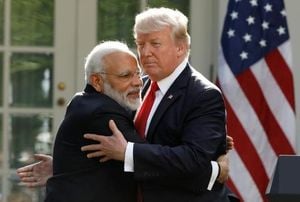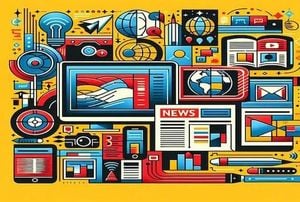In a surprising move during the ongoing Olympics, Google has decided to pull its advertisement for the Gemini AI chatbot from the airwaves following a wave of criticism that highlighted deeper societal concerns about artificial intelligence's role in creative tasks. The ad, displaying a father assisting his daughter in writing a heartfelt fan letter to Olympic star Sydney McLaughlin-Levrone, sparked backlash as viewers questioned why the child needed a chatbot to express her feelings.
The advertisement, titled "Dear Sydney," depicted a scenario familiar to many parents: a dad wanting to help his daughter communicate her admiration to an idol. Yet, instead of crafting a personalized message, he resorts to Google's AI assistant for help, prompting it with phrases like, "Gemini, help my daughter write a letter telling Sydney how inspiring she is". This approach quickly drew ire, as many felt it undermined the authenticity and emotional connection that should arise from such personal communications.
Critics on social media were vocal, arguing that the ad sends a problematic message to children about the value of originality. Shelly Palmer, a professor of advanced media at Syracuse University's S.I. Newhouse School of Public Communications, said there was an underlying implication in the ad that it’s acceptable to outsource meaningful expression to machines. He remarked, "I flatly reject the future that Google is advertising," voicing concerns that such narratives threaten to cultivate a culture where genuine human creativity could be sidelined as AI takes the lead.
Google’s defense before the ad was withdrawn suggested that the narrative was meant to illustrate how Gemini could serve as a writing aid—not a replacement for the human touch. "We believe that AI can be a great tool for enhancing human creativity, but can never replace it," the company stated. Despite initial confidence in the ad, the persistent backlash evidently forced a reevaluation, leading to the decision to remove it from Olympic airtime, although it still remains viewable on platforms like YouTube.
The core issue resonates beyond just one advertisement; it highlights a broader fear concerning the intersection of artificial intelligence and creativity. Users and critics alike, including writers and artists, are increasingly wary of AI's growing presence in domains traditionally reserved for human expression. Commentators have explained that AI's encroachment upon creative spaces—especially in a sentimental context where heartfelt communication is essential—could have chilling effects on what people create.
Google is not the only major company to face scrutiny over its AI-centric messaging. Apple also encountered backlash with its own advertising that featured destructive imagery, like a hydraulic press crushing musical instruments to demonstrate the new iPad Pro. Many viewed it as a dismissive take on creativity and were unsettled by the disturbing visual of valuing machines over human labor.
While technology continues to advance, the struggle to establish a balance between leveraging AI for efficiency and maintaining human authenticity is becoming paramount. The widespread concerns shared by professionals across various fields reflect an ongoing debate about the future of creativity in an age where AI can mimic, generate, and even adapt human-made content. As consumers continue to engage with products that increasingly rely on AI, they are also grappling with a fear of losing personal touch in their interactions and expressions.
Ultimately, the conversation surrounding Google's ad raises important questions regarding the representations of AI in cultural narratives. Critics suggest that instead of promoting a future where technology enhances our human experiences, ads like these risk presenting a homogenized future where creativity is tethered to algorithms, losing the beauty and messiness that mark true human expression. Moving forward, both consumers and the tech industry must navigate this delicate landscape responsibly to preserve the unique elements that define creativity and personal communication.



